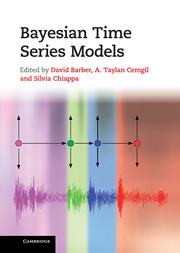Refine search
Actions for selected content:
1004 results in Computational statistics, machine learning and information science
2 - Large-Scale File Systems and Map-Reduce
-
- Book:
- Mining of Massive Datasets
- Published online:
- 05 June 2012
- Print publication:
- 27 October 2011, pp 18-52
-
- Chapter
- Export citation
1 - Data Mining
-
- Book:
- Mining of Massive Datasets
- Published online:
- 05 June 2012
- Print publication:
- 27 October 2011, pp 1-17
-
- Chapter
- Export citation
8 - Advertising on the Web
-
- Book:
- Mining of Massive Datasets
- Published online:
- 05 June 2012
- Print publication:
- 27 October 2011, pp 252-276
-
- Chapter
- Export citation
3 - Finding Similar Items
-
- Book:
- Mining of Massive Datasets
- Published online:
- 05 June 2012
- Print publication:
- 27 October 2011, pp 53-107
-
- Chapter
- Export citation
Frontmatter
-
- Book:
- Mining of Massive Datasets
- Published online:
- 05 June 2012
- Print publication:
- 27 October 2011, pp i-iv
-
- Chapter
- Export citation
4 - Mining Data Streams
-
- Book:
- Mining of Massive Datasets
- Published online:
- 05 June 2012
- Print publication:
- 27 October 2011, pp 108-138
-
- Chapter
- Export citation
7 - Clustering
-
- Book:
- Mining of Massive Datasets
- Published online:
- 05 June 2012
- Print publication:
- 27 October 2011, pp 213-251
-
- Chapter
- Export citation
9 - Recommendation Systems
-
- Book:
- Mining of Massive Datasets
- Published online:
- 05 June 2012
- Print publication:
- 27 October 2011, pp 277-309
-
- Chapter
- Export citation
5 - Link Analysis
-
- Book:
- Mining of Massive Datasets
- Published online:
- 05 June 2012
- Print publication:
- 27 October 2011, pp 139-175
-
- Chapter
- Export citation
Index
-
- Book:
- Mining of Massive Datasets
- Published online:
- 05 June 2012
- Print publication:
- 27 October 2011, pp 310-315
-
- Chapter
- Export citation
Preface
-
- Book:
- Mining of Massive Datasets
- Published online:
- 05 June 2012
- Print publication:
- 27 October 2011, pp ix-x
-
- Chapter
- Export citation
Contents
-
- Book:
- Mining of Massive Datasets
- Published online:
- 05 June 2012
- Print publication:
- 27 October 2011, pp v-viii
-
- Chapter
- Export citation
6 - Frequent Itemsets
-
- Book:
- Mining of Massive Datasets
- Published online:
- 05 June 2012
- Print publication:
- 27 October 2011, pp 176-212
-
- Chapter
- Export citation

Bayesian Time Series Models
-
- Published online:
- 07 September 2011
- Print publication:
- 11 August 2011
II - Deterministic approximations
-
- Book:
- Bayesian Time Series Models
- Published online:
- 07 September 2011
- Print publication:
- 11 August 2011, pp -
-
- Chapter
- Export citation
3 - Auxiliary particle filtering: recent developments
- from I - Monte Carlo
-
-
- Book:
- Bayesian Time Series Models
- Published online:
- 07 September 2011
- Print publication:
- 11 August 2011, pp 52-81
-
- Chapter
- Export citation
VI - Agent-based models
-
- Book:
- Bayesian Time Series Models
- Published online:
- 07 September 2011
- Print publication:
- 11 August 2011, pp -
-
- Chapter
- Export citation
7 - Expectation propagation and generalised EP methods for inference in switching linear dynamical systems
- from II - Deterministic approximations
-
-
- Book:
- Bayesian Time Series Models
- Published online:
- 07 September 2011
- Print publication:
- 11 August 2011, pp 141-165
-
- Chapter
- Export citation
6 - Approximate inference for continuous-time Markov processes
- from II - Deterministic approximations
-
-
- Book:
- Bayesian Time Series Models
- Published online:
- 07 September 2011
- Print publication:
- 11 August 2011, pp 125-140
-
- Chapter
- Export citation
12 - Sequential inference for dynamically evolving groups of objects
- from IV - Multi-object models
-
-
- Book:
- Bayesian Time Series Models
- Published online:
- 07 September 2011
- Print publication:
- 11 August 2011, pp 245-276
-
- Chapter
- Export citation
